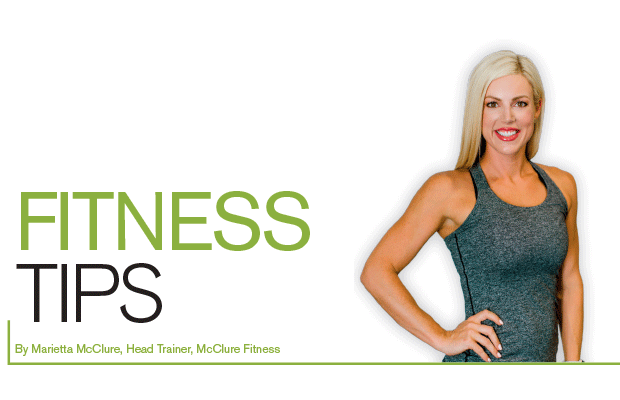A Smart Start

Starting any new goal can be intimidating, but when it comes to working out, it can seem especially difficult. Over the years, I’ve seen that the busiest attendance month is not January, but February, March, and April. We’ve realized that in January a lot of people who were not exercising in the months prior are still at a loss of what to do. They haven’t made a specific plan, then January slips by and they still haven’t acted. But by February they decide on a game plan, and we finally get to see them!
If you are stuck trying to decide what program or gym to try, the following tips can be a real game-changer in starting your workout routine.
Know Your “Why”
Before you even set out on your fitness journey, knowing where you want to go is crucial. Keeping up with your new exercise routine and turning it into a daily habit will not always be easy. You’ll want to turn that workout video off, skip going to the gym, or binge on the ice cream in your freezer.
Your “why” is the thing that is going to help you stay committed to your goal and resist temptation.
Your “why” is your end game, the thing that will keep you motivated when you really want to quit. For example, your “why” may be because you want to button those skinny jeans again or take back your post-baby body. Your “why” could also be the numerous health benefits that our bodies reward us with when we exercise, like slowing the aging process, helping you feel happier, lengthening your lifespan, improving your body composition, boosting your mental health, strengthening your immune system, and fighting inflammation.
Set S.M.A.R.T. Goals
If you’re setting fitness goals, make sure that they’re SMART ones.
Specific: Maybe your goal is to lose weight. That’s awesome, but not specific. How much weight do you want to lose? Are you going to lose weight through diet, exercise, or both? What types of exercises are you going to do? How often are you going to work out? These are all questions you can answer to make your goal specific.
Measurable: You must be able to somehow measure or track your progress to ensure that you will meet your goal in your set timeframe. So, before you start working toward your goal, have a plan. Consider using a Fitbit or Apple watch, or fitness apps like MyFitnessPal, to help track your progress. You can even go the old-fashioned way by taking measurements with a tape measure!
Attainable: Make sure that your goal is attainable within your given timeframe. If your goal is to get back to the same weight you were in high school, then chances are, that goal is not attainable. However, getting back to your pre-baby body is doable if you’re willing to put in the work and give yourself enough time to get there.
Relevant: Make sure that your goals achieve your long-term objectives. For example, if you want to build muscle and burn fat, it’s going to take more than just cardio. As always, I suggest you pair cardio with strength training through HIIT workouts or a similar exercise program.
Time-Oriented: If you’ve worked out with me before, you’ve probably heard me talk about the importance of assigning a number to something so that you give yourself something to work toward. In class, we do this by giving ourselves countdowns, saying things like “5 more burpees,” or something similar. However, you can also apply this to a long-term goal. You’ll work hard and keep going if you know the end is in sight.
Put It On Your Calendar
If you really want to implement a fitness routine, you need to start by scheduling it, especially if it’s something flexible like a run, a trip to the gym, or an online workout.
Whether you’ve got a cute little planner or you’re a Google Calendar girl, I encourage you to physically schedule your workout like you would an appointment on your calendar. This busts the “I don’t have time to work out” excuse and makes it harder for you to sit on the couch and watch TV when you should be working out.
Start Slowly & Work Your Way Up
A common mistake people make when they start exercising is trying to do too much too soon by either scheduling more workouts than their calendar allows or doing exercises that are too intense for their skill level. The last thing you want is to be burnt out, dreading your workouts, and eventually skipping them.
The United States Department of Health and Human Services recommends at least 150 minutes of moderate aerobic activity a week or 75 minutes of vigorous activity, but for best results they recommend 300 minutes of moderate activity a week. I know this seems intimidating (they said it, not I!), so I recommend starting with just two workouts a week, adding one day every week. Within a month, you’ll be up to your goal of five 30-minute workouts a week.
When it comes to the intensity of a workout, you can also take your time, starting off with low-intensity activity, working up to moderate-intensity exercise, and eventually high-intensity exercise programs. If you’re weight training, one way to do this is to start with a lighter weight and work your way up to heavier weights. You may start with an 8lb weight, and when you notice your muscles aren’t burning as much when lifting weights, move up to 10 lbs.
The point is to find a physical activity that brings you joy while allowing you to get the most out of your daily routine workout. Let’s start the new year SMART!









0 comments